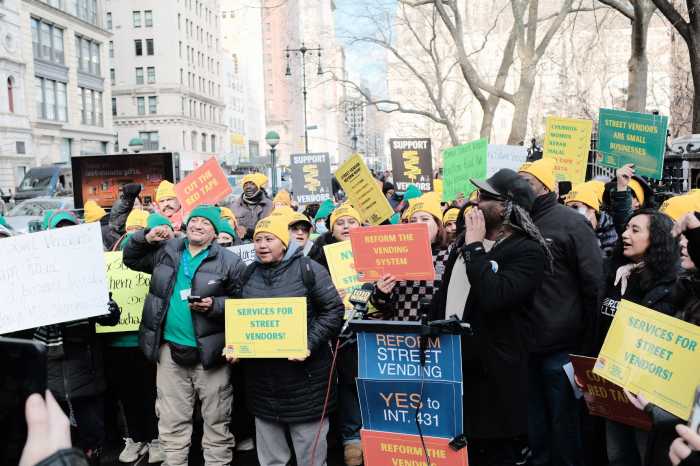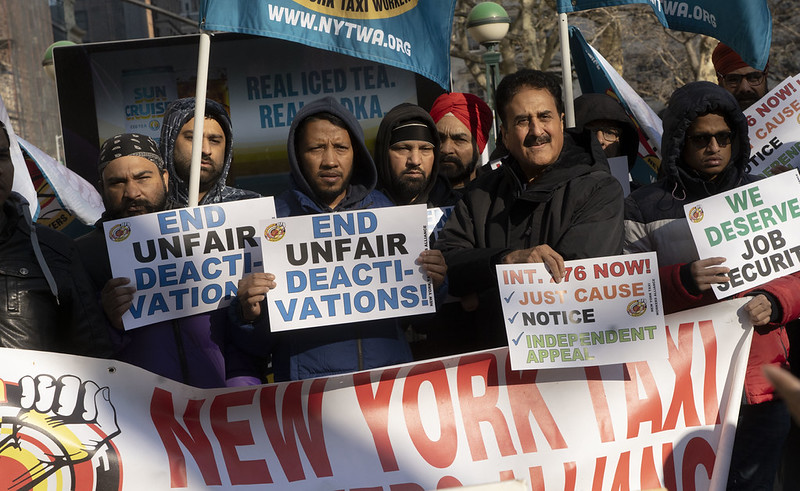By Mark Hallum
Mayor Bill de Blasio announced last week a replacement for controversial former Landmarks Preservation Commissioner Meenakshi Srinivasan more than three months after her resignation.
Sunnyside resident Sarah Carroll will take her place as chief preservationist for the city and while activists may not be entirely sold on the new appointee, an LPC chair without a background in real estate is a welcome improvement.
“Having dedicated my career to protecting the heritage of the city I love, it is a dream realized and an incredible honor to be appointed by the Mayor and entrusted by the Council to lead the commission,” said Carroll. “I look forward to continuing to work with the commissioners and staff to preserve and celebrate sites that reflect the diversity and rich history of our city and to partnering with property owners, elected officials, preservationists and communities to ensure these sites remain relevant for generations to come.”
De Blasio highlighted Carroll’s tenure — more than two decades — working in different capacities within the LPC, including her time as the executive director for the agency since 2014.
“Sarah is a dedicated public servant and preservationist with more than two decades of experience,” de Blasio said Sept. 26. “Her intimate knowledge of the commission’s work and her commitment to preservation make her an invaluable asset in the effort to protect the historic buildings and sites that make New York City so unique.”
Carroll will be transitioning into the role under the close scrutiny of activist groups such as New Yorkers for a Human-scale City, but also with the support of the Historic Districts Council.
“We have a long working relationship with Sarah Carroll, whom we have corresponded, collaborated, socialized, partnered with and argued against for close to 25 years,” HDC said in written testimony in support of Carroll’s appointment. “In that time, we have been impressed with Ms. Carroll’s professionalism, thoughtfulness, communicative nature and steadfast dedication to the agency… We ask her as the leader of the Landmarks Commission to take the hard road; to be cautious in granting permission and to be expansive in giving protection. Our city will be better for it.”
Srinivasan’s tenure was marked by citywide backlash for her perceived loyalty to developers over preserving the city’s history, which came to a head as a rule change was proposed within the agency to remove public input from decisions regarding approval of work on designated property.
Community boards throughout Queens voiced resistance — including the Little Neck-based Community Board 11 — because the rule change removed the neighborhood advisory boards from the process of approving alterations to individual structures altogether.
A source from within one of the groups opposing de Blasio and Srinivasan’s “developer friendly” approach to preservation said in April — when her resignation was announced — that an appropriate replacement would be a preservation expert.
Lynn Ellsworth, a co-founder of New Yorkers for a Human-scale City, said placing Srinivasan’s appointment was an example of “regulatory capture,” or placing a person with a direct conflict of interest in position of power, a process commonly seen in the Soviet Union.
Even with the agreeable history preservationists and academics have with Carroll, including her professional background, Ellsworth is not enthused that the commission will function much better under the current administration.
“I think this is a doable situation, [but] I don’t think that’s going to change the direction of the commission under de Blasio. I don’t think she has the leeway to change the direction of the commission. If she did, de Blasio wouldn’t let her do it,” Ellsworth said. “If you want to do a historic district [under de Blasio] you have to first do it under [the Real Estate Board of New York] and if they don’t like it they’re going to shrink it.”
Loycent Gordon has been attempting to have his business, Neir’s Tavern in Woodhaven, designated for years to no avail despite widespread political and community support.
Built in the 1820s at 87-48 78th St., Neir’s represents what little remains of the Union Race Course, which was Woodhaven’s main attraction at the time. The tavern was adjacent to the track and was used to film Martin Scorsese’s mafia classic, “Goodfellas.”
But in May 2016, the LPC under Srinivasan declared the tavern did not rise to the significance needed to warrant landmark status.
“Until a person truly from the ‘outer boroughs’ who understands our plight becomes the chair, our periodic efforts momentarily ‘coming up for air’ every other year to fight for landmark recognition will go down as another statistic of the oligarchy of the Manhattan-centric system,” Gordon said. “How else can you explain Queens County being five times larger than Manhattan but has one-fourth of the landmarks compared to Manhattan.”
Queens has 80 individual landmarks, four interior landmarks and 12 Historic Districts recognized by the LPC. But a map from the agency shows massive concentrations of protected sites in Manhattan compared to a sparse scattering of spots in Queens.
Reach reporter Mark Hallum by e-mail at mhall


































